
Records current for stardate 12400/Terran year 2312. [Records in alphabetical order]
 Azetbur, daughter of Gorkon
Azetbur, daughter of Gorkon
House: Gorkon.
Position: Chancellor of the High Council [2293 - 2311].
Born: September 2nd, 2250,
Race: Klingon female.
Marital Status: Widowed.
Personal:
Azetbur was born as daughter to General Gorkon.
Chancellor:
Azetbur accompanied her father, Chancellor Gorkon, on the flagship of the Klingon Empire: K'T'inga class battlecruiser callsign Kronos One. After communication with Captain Spock of Starfleet, her father had reassured Azetbur that this was a Vulcan worth talking to in the face of the destruction of their homeworld. Gorkon knew the danger of trusting a nation with whom they had distrusted for 142 years, and had been enemies for seventy of those. As a Klingon, Gorkon did not fear the Federation, he only feared the fall of the legacy of Kahless.
Azetbur, the dutiful daughter, stayed by her father's side. Now aged 43, Azetbur was ready to take her place on the High Council as the heir to the House of Gorkon, should anything happen to her father. Azetbur had been there when her father had negotiated with new races to join the Klingon Empire; the display of shock and awe with the batlefleet and their warriors had been a sight so impressive as to stir the blood of even a dead Klingon: it was the stuff of song and legend! If this was to risk being the end of the opera for her father, then let it end in the majestic way that was fit to top all of his achievements so far.
Kronos One met with the Enterprise-A, flagship of their Federation enemies. Their ship was not as powerful as the larger Excelsior class starship that they had built and Azetbur felt the human-run Federation was disrespecting the Chancellor in not bringing their most powerful warship. Gorkon had not brought the L-24 class Komo Val as he had bot a sense of tradition with the K'T'inga class and also this would match Captain Spock's vessel. This was a meeting to discuss terms, not to declare war. Azetbur realised perhaps that was why Starfleet had sent a smaller, older warship.
The human Captain Kirk had set up a dinner onboard the Enterprise; this was the Federation way of doing things: to talk. The food was cooked and did not move like proper Klingon food did. This was expected, but still unpleasant. The humans seemed to lead the conversation, even though it was the Vulcan, Spock, who had arranged everything with her father. This was truly the Homo sapiens-only club her fther had spoken of, and Azetbur told them this. This was not a meeting of equals, this was a display of the softness of the Federation. If it was not for the technology that the Federation had, and the seriousness of the Praxis explosion, these negotiations would never have happened. Once she was back aboard Kronos One, Azetbur spoke to her father of her observations. He understood her reservations, but reminded her they needed the Federation. Hours later, Kronos One was fired upon and its gravity system was knocked out. Whilst Azetbur floated in her quarters, she heard shooting outside. By the time gravity was restored and she got to her father, he had been murdered by humans from the Enterprise. Her father's Chief of Staff, General Chang, arrested Kirk and Doctor McCoy for the crime.
Succession was the next matter on her mind. Azetbur knew that there were those opposed to the meeting with the Federation and that the assassination of her father was an act of war. Gorkon had taught his daughter well, and she knew she would have to fight one of the male members of the High Council: probably a military flag officer. In the event, Azetbur was able to defeat the larger, stronger warrior with her faster, more agile moves with the d'k'tahg. After finishing with the General, Azetbur declared to the assembled High Council that the talks with the Federation would continue in her father's name to honour him. Azetbur had been surprised that more capable warriors like Chang had not challenged for the Chancellory; she dismissed it as loyalty to her father.
Azetbur arranged to meet the Federation President on the border world of Khitomer. Standing orders were left with the Imperial Klingon Navy that in the event of her assassination, war would be declared on the Federation. In the event, it was the Federation President that was targetted by a human Colonel, disguised as a Klingon to derail the talks. Chancellor Azetbur and Federation President Ra-Ghoratreii agreed to complete the Khitomer Accords to honour her late father. Ra-Ghoratreii noted that the first duty of a Klingon Chancellor was to declare war: this would show the Chancellor who were their allies and who were their enemies. Let them declare war on thoe that would derail the talks between these two nations. Azetbur had a reassurance from the Federation President that the Federation would not look to expand into any former Klingon territories that broke away from the Klingon Empire, nor would they entice colonies of the Empire to break away in the first place. Azetbur was impressed by the honourable speech by the President.

The first impression of the Federation and its President was soon rocked. As had been predicted by Imperial Intelligence, some of the least loyal, fringe colonies of the Empire were now threatening to leave. The military forces of the Empire were pushed to the limit protecting the border and keeping the renegades in line. Where the colonies had declared independence or open insurrection, Azetbur sent a fleet of warships to subdue the rebels and kill the leaders. What Azetbur was not prepared for was Terajuni. The ink on the Khitomer Accords was barely dried when reports came in of a Federation warship, Valiant, that had been drawn into Terajuni space and recognised the declaration of independence of the Terajuni people and their historic oppression. Valiant was supported by the Federation flagship battleship Excelsior which made Azetbur concerned at this move. The Chancellor demanded communications with the Federation President for an explanation. The Head of Imperial Intelligence, Kest, had briefed Azetbur that the Federation President was most likely unaware of what the Federation Captain had said and done. The Federation allowed their Captains great leeway when it came to warship operations - something the High Council had more control over.
When the Federation President did not rescind what the Valiant Captain had said, Azetbur reminded the President that he had promised not to expand into Klingon territory and that she could not guarantee the safety of the two Federation warships in their territory. Azetbur knew that with the conflicts on the Romulan and Syr'Ypt'Q fronts, she could not afford to declare war on the Federation. The stretched warship numbers and loss of a large number of Klingon repair facilities over Qo'noS had left the fighting forces of the Klingon Empire dangerously depleted. Their enemies knew this, and this was why the battles on all fronts had intensified since she took over as Chancellor. Azetbur contacted the leaders of the Houses nearest the Terajuni system and allowed them to defend the system from the Federation but not to cross into Federation space. Reports came back later of the loss of Internal Security warships along the border from the Valiant and Excelsior using the asteroid field along the border to sneak into Klingon space. An Imperial Intelligence agent had been used from the Federation Key Stone Starbase 22 to sabotage the Excelsior. This had gained the time for the Klingons to kill the two traitors at the Astkel 6 station.
Azetbur was pressed hard by the High Council to declare war on the Federation. The Klingon Empire may need the help of the Federation, but this did not allow them to be dishonourable, go back on their word and invade Klingon space. targetted Terajun for a Scorched Earth policy using tri-ox bombs. The High Council was divided over this extreme measure; one side arguing that the Khitomer Accords had sold Klingon values cheaply, that Boreth might be next, the other side stated the Federation would not stand idly by as they torched the planet and its population. The compromise was to demand an audience with the Federation at Khitomer, to discuss keeping Terajun in the Empire. House Amar, defenders of the border nearest the Federation, took it upon themselves to drop tri-ox bobs on Terajun. Azetbur ordered the Imperial Klingon Navy to stop House Amar. Lacking the ships in the region, Azetbur opted to use the back-channels at Nimbus III to ask Starfleet to intervene until the Klingon forces could arrive.
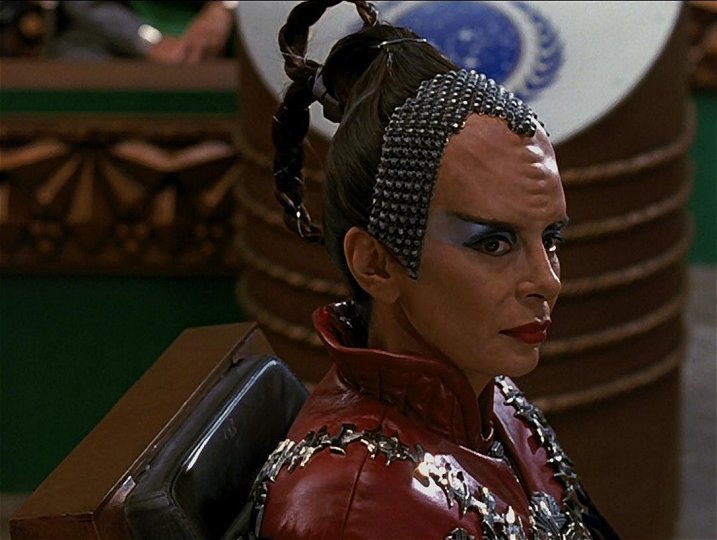 Azetbur was caught in the grip of Fek'lhr: trying to save her father's Empire by appeasing the Federation for now and to be the leader of the High Council. It took all of the political training that Azetbur had from her father to keep the High Council onboard - not before a headstrong challenger had to be cut down by Azetbur. The Federation President had given a full speech supporting the Valiant Captain's declaration. Azetbur responded: Azetbur responded: "This is a time for precedents to be set. Where Terajun leads, others will follow. They must not be allowed to become any part of your Federation, less the Empire descend into mass uprisings and a flood of refugees plague your border worlds. We will let them have their freedom - for now. But they are a Klingon world, and a Klingon world they will remain. Those who sought to perpetrate a crime of galactic proportions, leaving a stain that could never be expunged from our honour, have been arrested and will be dealt with by Klingon law. Those who participated have already been executed. The Klingon Empire will never be a party to genocide. Nal khomerex, khesterex. We will grow - but in the way Kahless himself intended: facing our foes and defeating them in honourable combat. Whomever is the stronger, smarter, better shall prevail. And if there are those who seek to regain what their forebearers lost to us by challenging us anew, well... we look forward to the next battle."
Azetbur was caught in the grip of Fek'lhr: trying to save her father's Empire by appeasing the Federation for now and to be the leader of the High Council. It took all of the political training that Azetbur had from her father to keep the High Council onboard - not before a headstrong challenger had to be cut down by Azetbur. The Federation President had given a full speech supporting the Valiant Captain's declaration. Azetbur responded: Azetbur responded: "This is a time for precedents to be set. Where Terajun leads, others will follow. They must not be allowed to become any part of your Federation, less the Empire descend into mass uprisings and a flood of refugees plague your border worlds. We will let them have their freedom - for now. But they are a Klingon world, and a Klingon world they will remain. Those who sought to perpetrate a crime of galactic proportions, leaving a stain that could never be expunged from our honour, have been arrested and will be dealt with by Klingon law. Those who participated have already been executed. The Klingon Empire will never be a party to genocide. Nal khomerex, khesterex. We will grow - but in the way Kahless himself intended: facing our foes and defeating them in honourable combat. Whomever is the stronger, smarter, better shall prevail. And if there are those who seek to regain what their forebearers lost to us by challenging us anew, well... we look forward to the next battle."
As it turned out, the Terajuni worked into Azetbur's hands. Azetbur had managed to get a handful of warships to try and regain the Terajun system. Just as the warships arrived, the Terajuni turned on the Federation warships: capturing the Excelsior and causing the Valiant to fight alone. The resourceful warship captains managed to defeat the warships and the Terajuni hijackers. With the Federation President himself one of the former hostages, the Federation warships withdrew. This was the political opening that allowed Azetbur a moment of satisfaction that the Federation's taste of imperialism and deception had ended in bitter embarrassment. For now, Azetbur was able to reduce tensions in the High Council and maintain a nominal amount of warships in the region. Terajun could wait for later. The Romulan and Syr'Ypt'Q borders needed more warships and there was a new threat on the horizon.
Choroth
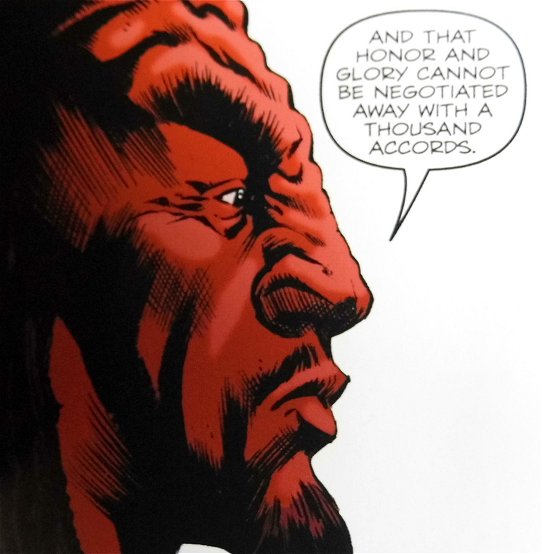
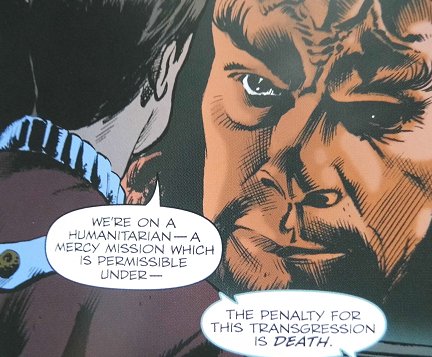 Large muscular Klingon General who was promoted during the Gorkonian era. Head of the House of Choroth, he commanded the K'T'inga class Vengeance and later other K'T'inga class battlecruisers.
Large muscular Klingon General who was promoted during the Gorkonian era. Head of the House of Choroth, he commanded the K'T'inga class Vengeance and later other K'T'inga class battlecruisers.
Stardate 9856.4, the U.S.S. Enterprise NCC-1701-B picked up Doctor Leonard McCoy to deal with an outbreak of Terrellian Virus, which he was an expert in. The Enterprise was challenged by the Imperial Klingon Cruiser Vengeance under the command of General Choroth. After a short exchange of fire, Captain John Harriman surrendered to the Klingons; this was a ruse to arm photon torpedoes and beam them onto the Klingon K'T'inga class warship, simultaneously baming the entire Klingon crew off. There were unsubstantiated allegations that the virus outbreak was caused by the General. After the resulting political fall-out, Choroth returned to the Empire with his crew and was re-assigned. Azetbur had neither the political strength, nor the abundance of generals to exile the embarrassing failure to Rura Penthe. In the event, the blame went on the Tactical Officer of the Vengeance who was executed for his incompetance. General Choroth swore revenge on Harriman and they would clash many times after this.
Author's Notes:
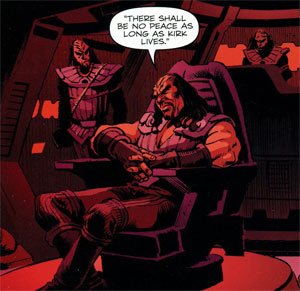 The Vengeance Incident came from Captain's Log: Harriman graphic novel by Marc Guggenheim. This was set 6 months after the loss of Kirk in the encounter with the Nexus. General Choroth served on the Federation border along with the Houses of Amar, Chang, Duras and G'Iogh. Choroth served on the High Council and was politically a rival to Azetbur and opposed relations with the Federation. After the incident with the Enterprise-B, Choroth would clash with the Federation a few more times.
The Vengeance Incident came from Captain's Log: Harriman graphic novel by Marc Guggenheim. This was set 6 months after the loss of Kirk in the encounter with the Nexus. General Choroth served on the Federation border along with the Houses of Amar, Chang, Duras and G'Iogh. Choroth served on the High Council and was politically a rival to Azetbur and opposed relations with the Federation. After the incident with the Enterprise-B, Choroth would clash with the Federation a few more times.
I like Choroth. He's exactly what I want for the Interim Years: a Klingon who is both on the High Council and a General who's opposed to the Khito Accords. As the graphic novel The Blood Will Tell by Scott Tipton and David Tipton showed, the decision to go along with Gorkon was a split decision in the High Council. Chang as all for a military solution whereas Chancellor Gorkon wanted a diplomatic solution with the Federation. Kahnrah had to make the deciding vote. Even after the death of the treacherous generals on the Bird of Prey in Star Trek VI, there will still be many among the High Council who are against any form of co-operation with the Federation; they are the TRUE enemy of the Klingon Empire.
Choroth, like the House of Amar, is along the Federation border and these have been taught as the true enemy of the Klingon people - see General Chang's speeches in Klingon Academy. Choroth is unwilling to be taken in by the liberal rhetoric of Azetbur; he wants to see the Empire TAKE the resources and supplies they need from the Federation. Only through STRENGTH, in the ways Kahless taught them, can the Klingons rebuild their Empire and be true to themselves.
J'bok
Orbiting near a purplish ringed gas giant is the Klingon world of T’ranjir. On the pock-marked surface of the planet is the home of the House of G’Iogh. The fortress-like main palace has stood since the time of Emperor Sompek, despite being assaulted by warships several times. T’ranjir lies close to the Klingon-Romulan border and has been attacked several times, resulting in the rebuilding of the palace on more than one occasion. Home to the former challenger to the throne of the Klingon Empire, Kalnor son of G’Iogh, the palace is now the home of J’bok, son of Kalnor. J’bok was only a boy of ten when his father was challenged and killed by General Chang. Now aged 30, J’bok is the head of the House of G’Iogh after the death of his uncle Melkor and the failed attempt to hunt down and destroy this House.
J’bok has rebuilt the palace of his forefathers with the assistance of the House of Duras. Hidden fleet reserves have meant that the House of G’Iogh has once more a selection of dreadnoughts, battlecruisers, destroyers and frigates. The performance for the House of G’iogh during the moment of need for the Empire against the Syr'Ypt'Q, has resulted in the House being brought back in from Discommendation. Given the power of the ancient Great House of the Klingon Empire, it was never in doubt that the exile and shame of this House would only ever be temporary. The House of G’Iogh has helped to keep the border with the Romulans quiet. Officially this calm is the result of the combat prowess of the warriors led by J’bok. Behind the scenes, rumours have resurfaced of working with the Romulans, although the border war that resulted from the last alliance makes this less than certain.
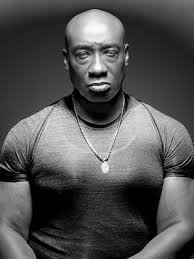 Kaarg
Kaarg
House: Kaarg.
Position: Chancellor of the High Council [2312 - ].
Born: November 11, 2265, Kronos.
Race: Klingon male.
Marital Status: Married to L'naara of the House of M'kuve.
Personal:
Kaarg took over as head of the House of Kesh after the ritual suicide of his brother, Torbek. The removal of a defective brother from the House allowed Kaarg to put his own plans for the House into effect. Kaarg was the third brother, although he still had a good education at a good dojo (although not the private tutelage and imperial dojo his two older brothers enjoyed) he was not groomed directly for succession. Kaarg's strength was in strategic planning and in the imperial fleet he found an ideal outlet for his talent.
Kaarg had an early career involving the Gorn and Syr'Ypt'Q, which allowed for rapid advancement from junior officer to commander to squadron commander. By the time of his brother Torbek's death, Kaarg had become a general in charge of a substantial fleet. Rumour has it the General made deals with the rogue House Korgath, perhaps building on relations that Torbek had initiated in order to pursue an agenda against Azetbur and bring honor and glory back to the Empire. General Kaarg became known as a 'backroom planner', beng renown for tactics and strategies culminating in the stalling of a Tholian force in 2309. This was a far cry from the young lieutenant who was at the vanguard of the assault on Ch'ramak in 2285. Kaarg's early career in shrouded, but it is thought that being the son of the Chancellor broght with it the best assignments for career advancements. Helping to supress Ch'ramak and other worlds helped to shape Kaarg's tactical planning on battle-winning. That led to commanding assault units, assault ships and then the fleets that faced the Syr'Ypt'Q.
Kaarg slew General Klaa in 2312 and became the Chancellor of the Klingon Empire after the death of Azetbur. Kaarg wasted no time in banning women from serving in the High Council. His first acts have been to remove the influence of the Federation on the Empire and to forge new alliances like with the Ferasans, whilst restoring traditional ones.
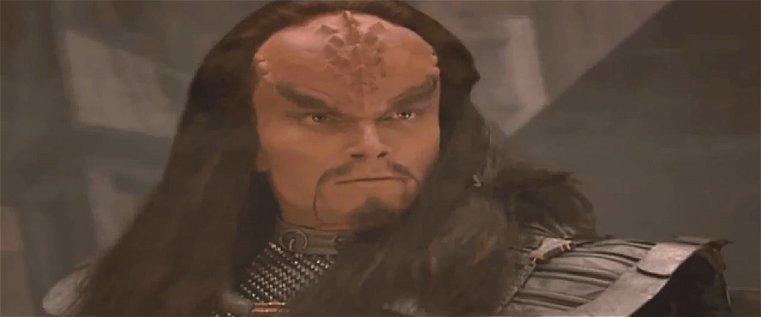 Kalnor
Kalnor
Kalnor, son of G’Iogh, was the head of the House of G’Iogh from 2284 – 2290. Kalnor lived on T’ranjir, the home of the House of G’Iogh. Kalnor was taught Kahlessian philosophy by his father, alongside his half-brother Melkor. The two brothers had a complicated relationship that ran as much on rivalry as it did blood. Kalnor believed in honour and pure Kahlessian philosophy, whereas Melkor was more of a fan of the brief alliance that had existed with the Romulan Star Empire. Kalnor was adept at knife-fighting and starship tactics, proving himself with a B’rel class Bird of Prey and later a VoDIeh/Emperor class battlecruiser.
Kalnor represented the House of G’Iogh in the High Council after the death of his father. Hi early enthusiasm for Chancellor Kesh faded when Kesh favoured diplomatic talks with the United Federation of Planets. Kalnor saw this as a sign of weakness from the Chancellor, and a display of weakness to the enemies of the Empire. Kalnor saw the illness of Kesh, caused from an accumulation of scar tissue from combat, was weakening the Chancellor’s resolve as well as his body. Kalnor saw no other option but to challenge Kesh for succession, when his criticisms of Kesh’s policies did not seem to find enough support. Before Kalnor could put his plan into action, Councillor Gorkon had already challenged and killed Kesh, claiming the Klingon throne and ensuring Kesh retained his honour.
Kalnor was outraged that the traitor Gorkon, who had been negotiating with the Federation over lessening the cold war tensions between the two nations, could now be the Chancellor and directly influence the Klingon High Council. Kalnor declared Gorkon’s victory null and void. He swore that the Klingon Empire must regain its honour and fight its way back to victory and glory. Kalnor’s inspiring speech managed to split the High Council and gave Kalnor the opportunity to assemble a fleet of warships big enough to challenge the main fleet now commanded by Chancellor Gorkon. The main concern for Kalnor was the challenge from General Chang to defeat him. Chang, the archetypal honourable Klingon, stood by Gorkon for winning the chancellorship in the time-honoured and approved way.
General Kalnor proved a superior strategist and managed to defeat Gorkon’s forces and battle his way to the homeworld of Qo’noS. The battle that ensued would decide who would be the Chancellor. Whilst Gorkon was trapped on the planet, combating the ground troops and maintaining the First City as his base, General Chang used his VoDIeh class to defeat Kalnor’s own ship of the same class. Chang, wanting a quick resolution to the civil war, beamed onto the bridge of Kalnor’s warship and challenged him to the rite of blood peace. Kalnor disregarded him and reminded Chang that the General’s life became Kalnor’s property the minute he boarded the warship. Chang needled Kalnor by pointing out he was a coward from a House of cowards. That was enough to provoke a fight. Despite blinding Chang in one eye, Kalnor was ultimately defeated by Chang who drove his d’k’tahg in to Kalnor’s heart. Kalnor died a warrior’s death and both Gorkon and Chang considered the matter closed. Whilst no repercussions came to the House of G’Iogh, a year later Melkor, Kalnor’s half-brother, would mount a challenge to the leadership himself.
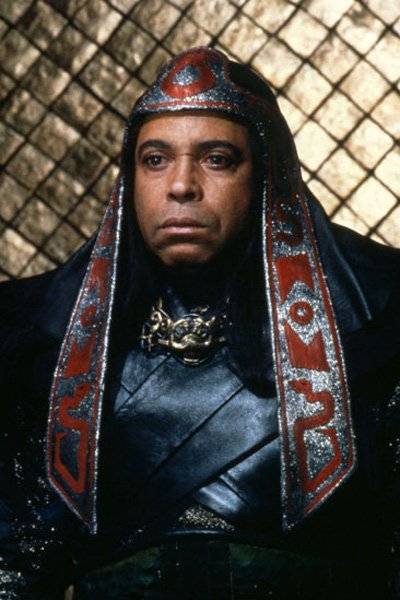 Kesh
Kesh
House: Kesh.
Position: Chancellor of the High Council [2270 - 2289].
Born: December 19, 2221,
Race: Klingon male.
Marital Status: Widowed.
Personal:
Like Mikhail Gorbachev and Boris Yeltsin being blamed for the fall and destruction of the Soviet Union, Gorkon and Azetbur are similarly blamed for the fall of the Klingon Empire by colluding with the Federation. The accusation is that they compromised the independence of the Empire to resolve the destruction caused by the explosion of Praxis. The actual decline was over the reign of Chancellor Kesh (Early 2270s - 2289).
Chancellor Kesh rose from the failure of Chancellor Sturka to capitalise on the alliance with the Romulan Star Empire. Kesh was a bear of a Klingon, with ridged head and eloquent, yet menacing voice. He was a student of Kahlessian philosophy and could quote Kahless for his own gains, twisting the meaning to justify his own brand of honour. Kesh was a master of all Klingon personal weapons from daggers, to sword to disruptors. A student of one of the finest Klingon dojos, thanks to being a member of one of the most powerful Great Houses in the Klingon Empire. He had attained greatness through combat and had sat on the High Council for well over a decade. Kesh had been in the inner circle during the era of the Quch'Ha being the dominant sub-species of Klingons in the council and he now stood up to take over the High Council and continuethe expansion of the imperial ambition.
The 2270s and 80s were a time of trying to compete with the United Federation of Planets. The acquisition of cloaking technology and the evolution of the D-7 Koro class into the D- K'T'inga class was pushing the resources of the Klingon Empire to the limit. Development of the B-10, later B-11, Accuser class dreadnought put an additional drain on the Empire. Kesh drove the Empire to fight in order to demonstrate the strength of the Klingon people in true Kahlessian style.
One of the main supporters of Kesh was General Chang, a veteran Klingon officer who had fought in several campaigns including ones against the Federation, the Romulans, the Gorn and the Syr'Ypt'Qs. Chang, like Kesh, had studied Kahlessian philosophy but saw a more pragmatic interpretation of the stories. Chang had been the first Klingon to see the advantages of the Romulan cloaking device. Whilst the Romulans had superior cloaking generation and penetration technology, the Klingons enjoyed a significant tactical advantage over the Federation, Gorn, Kinshaya and ngej. The D-7 Koro class (by then a 20 year old design as D-7E) had finally come of age as a battlecruiser. General Chang had been heavily involved in the war against the Romulans; his knowledge of cloaking technology and tactics allowing him to counter the superior Romulan cloaking devices. Chang fought alongside Kor to defeat the Romulans. Decisive combat at the Battle of Klach D'Kel Brachkt - or Briar Patch on Federation charts - allowed the Klingons to use gaseous displacement to track and target Romulan ships.
This relationship between Kesh and Chang allowed Kesh to maintain the Empire, even in the face of growing pressures from being restricted by the Federation, Gorn and Romulan borders. Chancellor Kesh kept pressing for larger and larger warships and an increase in technological advancements. The B-10 and B-11 Accuser, B-12 Sword of Kahless, B-13 Ber-taa, B-14 WoQ'a and L-24 Komo Val were all authorised and pressed forwards by Kesh, even in the face of strains on the resources and scientific caste. Right from needing to reverse-engineering and improving on the MK1 Romulan cloaking devices to match the Romulan MK5 version, Kesh sought to overcome the technological deficiencies of the Empire to face up to their Romulan rivals. The Imperial Klingon Navy fleet continued to expand past 10000 warships.
Chancellor Kesh was not above using captured personnel and technology to advance the Klingon Empire. The capture of Romulans and their warships in the 2270s helped advance the Klingon cloaking devices far faster than merely reverse-engineering had. This courted controversy in 2279 when the early production Oberth class starship U.S.S. Gagarin (NCC-603) was captured, along with Captain Gralev and many of his crew. Although the Gagarin was destroyed, enough knowledge and technological samples were obtained to give the Klingons some insights into cutting edge Starfleet technology. The crew were kept prisoner until rescued by Captain Kirk in 2287.
By the late 2280s, Kesh had changed to a period of stagnation. His health was failing from the cumulative effect of the wounds of combat inflicted over decades. Kesh was trying to hold onto power at any cost and was prepared to allow Councillor Grkon the opportunity to negotiate with the Federation. The Empire was beginning to show cracks from running at 110% for too long. Councillor Kalnor of the House g'Iogh was challenging Kesh more and more on the running of the Empire. This would soon end in the old Chancellor being killed, or dying from his ill health. Gorkon took it upon himself to challenge Kesh over the runing of the Empire. Gorkon knew that the Empire needed a change of leadership to survive. Gorkon and Kesh fought valintly with d'k'tags until Gorkon finally planted his into the heart of Kesh. As Gorkon closed the eyes of the defeated Kesh, after roaring at Sto-Vo-or, he whispered in the ear of Kesh: "Better to die at the tip of a blade, than face dishonour at having survived long enough to die of old age."
With Councillor Kalnor disagreeing with the duel and outcome, so the first part of the Klingon Civil War began in 2290. Whilst honour said that the sons of Kesh could not avenge the honourable challnge and defeating of their father, this would not stop the third son eventually reaping revenge on the House of Gorkon.
Author's Notes: I see Kesh as being the equivalent of Soviet Premier Leonid Brezhnev (1968 - 1982), bringing in a new era after the 60s Chancellor Sturka's great alliance with the Romulan Star Empire disintergrates into a war that threatens the Klingon Empire to an existential level. Having presided over victory againt the Romulans, progress against the Gorn Hegemony and even campaigns against the Federation like Taal Tan, Kesh ends in stagnation and poor health.
On the latter point I had a thought - Klingons don't live long as they live to fight everyday. Klingons actually should be scarred and show signs of this combat, rather than be untouched ridged and bearded 'pretty boys' who seem too untouched to have fought so regularly. Kesh had survived into his sixties and was slowing down, with his health failing from numerous injuries gained in combat. If he died of poor health, there is no honour in this. If Gorkon challenges and kills him, he retains his honour. In this way, Gorkon kills Kesh so that Kesh may retain his honour. There's something alien and distinctly KLINGON about this.
Kesh was created by Dayton Ward. For further details on Kesh, I shall quote an email from Dayton Ward himself: 'To be honest, I deliberately left many of the details regarding Kesh vague. I knew that I was working in an area of Trek history that had not been defined very well, on screen or in books, and wanted to leave room for anyone who might come after me (The LOST ERA series had not been conceived at the point I was writing the novel.).
In my mind, Kesh was one of the Klingons who did not embrace the "revival" of Klingon honor -- at least as I tried to explain it in the book. He, along with others on the High Council, tried to cover up the existence of the prisoners and gave the order for the prison to be destroyed when it became apparent that it would become a sticking point in his bid to retain power. That's corrupt by human standards, and almost certainly by standards of "Klingon honor," but as I tried to display in the book...Klingon honor can be a tricky thing to understand, etc. :)
As for a physical description, since I never actually used him in the book, I never got around to creating him as a character. I had mental picture of him at the time, sort of a cross between General Koord from ST V and Kang as a "ridged" Klingon (mostly because I've always loved the way Michael Ansasra delivered his dialogue). Make of that what you will....in my case, it leaves me free to define him should I choose to revisit the character at some point. :D
'
Interestingly, when asked about why he didn't do a Lost Era novel, Dayton replied:'With regard to my being involved with THE LOST ERA, in fact I was approached by editor Marco Palmieri to write one of the books. It never got beyond the "Are you interested?" stage because at the time I was hip deep in writing THE LAST WORLD WAR and could not commit to another project. That's the trouble with working a full time day job and trying to write on the side....not enough time for the important stuff!'
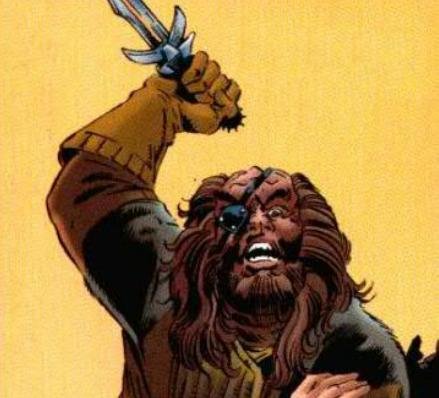 Kort
Kort
House: Kort
Rank: Former Forecaster, Crimson level.
Smuggler.
Former Forecaster for the Klingon Empire, Azetbur’s reconstruction regime saw him demoted to being an intermediary between smugglers and weapon merchants. Selling everything up to including K’T’inga class battlecruisers. Kort works with two Andorians, one bulky in fur vest, one slender in chain mail. Insists on searching his customers every time they meet.
“Even the fabled Starfleet is no different than the Empire's Navy. Step on a worm often enough, and even the lowliest will evolve wings.”
On Federation Standard: “Yours is such an awkward language.”
“Please”, the Klingon begged. He was so abject, so lacking in Klingon spirit that Chekov had to wonder what atrocities Kort had encountered to lose his warrior's resolve and training so absolutely Klingons never begged. At least a decade ago they didn't. Neither did they sell off parts of their Empire for quick profit. Times were changing and Klingons with them.
Kort was a datakeeper for the Imperial Forecasters, crimson level. Klingon code exchange – “What is the path of the fourth-rank watch-dragon? “ - “By Praxis' light, in seasons still to come “. Kort intoned the phrases as if reciting poetry. Lines are from the death poem of Molor. Jade aware of Imperial Forecasters and their codes, Chekov has never heard of them. The secret in Kort's Crimson Level that will make Jade spare his life is Chalchaj 'qmey.
With the end of decades of military tension between the Fed and the Klingon Empire, the Klingon armed forces were falling into disarray. Weapons inventories were no longer secure. This section of the galaxy was especially vulnerable to the possible entry of Klingon armaments into the open market.
The Imperial Forecasters were a division of the Klingon Strategic Operations Bureau, responsible of using advanced wargaming and simulation techniques, they forecast probably outcomes to military scenarios. The Crimson Level classification corresponds to Starfleet's security classification Ultra Secret. The Crimson Level was responsible for doomsday scenarios. Scenarios concerning the effects of interplanetary famine, plague, and natural disasters to the ability of Klingon colony worlds and protectorates to support the Empire. Scenarios concerning the effects of political upheaval on the ability of the High Council to govern the Empire effectively. Scenarios concerning the effects of the military defeat and subjugation of the Empire by its enemies, on the ability of the Klingon race to survive. The Excelsior computer has this information. It also knows the code phrases were lines from the death poem of Molor.
They were military planners. The Klingon Empire is a military culture. Uhura reminds Captain Sulu that Prestor V is a Klingon borderworld. No one's going to answer any questions a Starfleet ship asks. It's a Klingon borderworld. The whole planet is extralegal.
Military materiel from the old Klingon garrison was left behind, or stolen
Uhura doesn't think she wants to know the Klingon response to the defeat of the Empire. The poem was in Uhura's upgrade course. About fifteen hundred years ago Kahless the Unforgettable defeated the tyrant Molor to found what became the Klingon Empire. It's considered a classic.
From what we know about the Crimson Level of the Imperial Forecasters, it is logical to conclude that some of their more extreme weapons were developed on planets far removed from Klingon centres of population. All evidence suggests the joint Romulan-Klingon colony on Chal was the centre for the development, construction and storage of a weapon, code named Children of heaven. It was intended to be used only in the event of the total defeat of the Klingon Empire.
Teilani wants Kirk's help to bring peace to her world, Chal, a Klingon term for heaven.
Chal one of many attempts to bring the Klingon and Romulan empires together. Nameless to all but the colonists. A water world with only vegetation and a handful of animal species on its minuscule island landmasses. On the farthest reaches of the two empires' reluctantly shared, often disputed border. During a fitful truce between the empires about 40 years ago, the nameless world was selected as a place to strengthen their bonds. A failure like all the others. In time, the empires had fallen apart again. Trade broke off. The colony had been abandoned. In the end, neither empire wanted them. Kirk can't imagine either empire willingly giving up a colony world, not if there was a chance the other side would claim it. As far as either empire knew at the time, Chal had nothing of value, nothing more than a failed experiment from the past. More regrettable than exploitable. Even the founders left, returning to worlds of their youth. But their children chose to remain on Chal, all Klingon - Romulan hybrids. Declared independence.
Chal has something valuable. Neither empire knew. Eternal youth, and wound regeneration. The first generation did not age even as their own children grew. Illness never struck their world. Injuries healed without a trace.
Some on Chal want to profit from the past and the world's treasure. Pit both empires against each other and side with whichever promises the richer prize. Others don't want a return to conflict and violence of the past, want to preserve planet for future generations.
Chal, deep within the Klingon-Romulan frontier, at worst might face a threat from a few Orion pirates.
Chal has binary suns, primary yellow-white, secondary orange-yellow, incandescent plasma bridge joins the two. Four archipelagos. Largest island, in archipelago closest to the equator, was where the colony of Chal had first been founded, where first and only city was. 1000 population. Food for the taking. Work in agriculture just a few weeks a year. The building materials used and technological infrastructure the colony's founders had installed were robust and capable of self-repair. To Kirk it was almost as if the Klingons and Romulans who had created the colony had intended that their descendants would never have to work to maintain their blissful existence.
Chal - Heaven - as if every summer day on every beach that ever was had been collapsed into one perfect, shimmering blue moment.
The inhabitants lay on the sand, and swam in the oceans. Sports and games were high among the pursuits enjoyed by the Chal. Loosely organized committees arranged the minimal work schedules, a more formal group of volunteers formed the planet's government. Teilani was the one responsible for maintaining contact with other worlds. Computers provided almost all the suggestions and advice for running the colony. Food, shelter and recreation abundant for all.
L’mak – son of Qo'mar of the House of Qo'mar.
House: Qo'mar
Wife: L’sara, daughter of J’Kling
Children: 2 – Kuvar and M’lessa.
Rank: Brigadier
Position: Commander IKS yoH, leading three squadrons of warships.
Brigadier and currently commanding officer of the battered, old D-6 class yoH (Brave). L’mak had private dojo tutelage thanks to the rising status of his House through the victories of his father, General Qo'mar. L’mak found some of the intricate moves of Klingon martial arts to be difficult due to his large frame, however he soon learned from his father how to work around this. Even from a young age, L’mak towered over his peers and soon learned to take advantage of his size to intimidate others and win brawls. L’mak was studious, learning about Kahlessian philosophy and Gorn culture and tactics – specialising for his region of the Empire.
L’mak surpassed his peers in the regional contests for unarmed fighting, Batleth and Mekleth combat. It was no surprise when he was assigned to the Dek’Go’Kor Academy to be trained as an officer in the Imperial Klingon Navy. L’mak wasn’t to know it but his Class was to be the last one taught by General Chang. Chang taught L’mak and the other cadets about what it was to be a Klingon. The course featured battle simulations for fighting against the United Federation of Planets. L’mak found the simulated humans to be devious warriors, but it was the Vulcans for their intelligence and the Andorians for their warrior’s heart that L’mak was most impressed by. It was this curiosity about his enemies that led him to be selected for the Klingon-Federation Exchange School.
L’mak attended the first year of the Federation-Klingon Exchange School at K’Hat, Sherman’s Planet. L’mak wanted to learn about the Federation to understand his enemies – this was an unprecedented opportunity and Cadet Nathaniel Hawkins was a fortunate meeting that would allow him to study a Starfleet officer first hand. The two found more in common with each other than each had thought. L’mak saw Hawkins as a short, wiry trainee who was an eager puppy to learn about the Klingon culture. He could speak fluent Klingonese, which was impressive. L’mak could speak Terran standard just as fluently. Given how unimpressive Hawkins was as a warrior, L’mak was still impressed at the tenacity of the cadet, even when outmatched by a Klingon.
After the disappojntment of humans, L’mak looked forward to following his Father and fighting their true enemy: the Gorn. The House of Qo'mar was located near Ogat and the Klingon-Gorn border. The border wars across the region had raged for decades and showed no sign of slowing. L’mak’s less impressive brother Omakh had been killed by the Gorn during his first encounter. Qo'mar has been disappointed by the elder brother and hoped his second son showed more promise. L’mak delivered, demonstrating both weapons skills and Klingon warrior spirit when fighting the Gorn hand-to-hand.
L’mak was the sole survivor when his Bird of Prey Duj Puj was brought down by Gorn and the crew were hunted. L’mak’s superior fighting skills and naturally tough build meant he was able to take on all-comers. He was eventually rescued by another Bird of Prey. Promotion from Commander to Captain was as swift as his ascension from Lieutenant. His new D-6 assignment matched his standing as a Klingon warrior and next in line to lead the House.
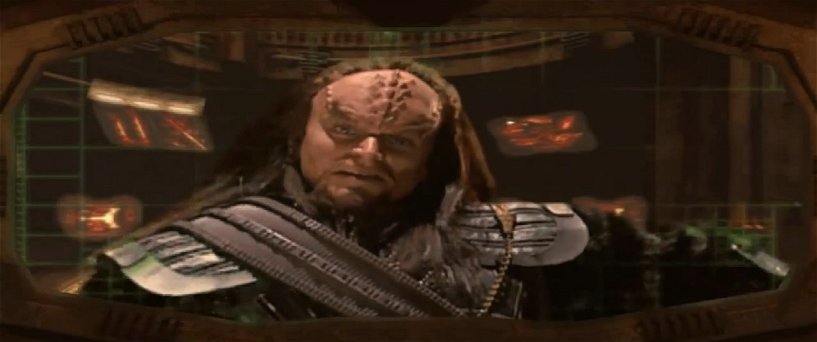 Melkor
Melkor
Melkor, son of G’Iogh, was the half-brother of Kalnor. A master of the Klingon strategic game of Klin Zha. Melkor was a student of Klingon history, enjoying the mention of Emperor Sompek and the lineage from him leading directly to the House of G’Iogh. Melkor, as the second son and half-brother, always felt like he played second fiddle to Kalnor. Melkor never felt as if his achievements were praised to the same degree; he used his anger and frustration to master his combat skills and learned to work around his shortcomings with deviousness and cunning. Malkor applied to the Imperial Klingon Navy as soon as he was old enough. Melkor started off as helm officer and soon his strategic mind allowed him to move to weapons officer and first officer. Melkor first commanded a B’rel class Bird of Prey before moving up to a Warrior’s Anger class command cruiser. Melkor supported his half-brother in attempting to usurp Gorkon; it was only the lenient response after the death of Kalnor, that Melkor was following the orders of his older brother, that saved his life.
Melkor saw Kahlessian philosophy as being victory at all costs. With the failure of his older half-brother to take the chancellery, Melkor made his move to lead the Empire. Building from the heritage of his House, which dates back to Emperor Sompek, Melkor made a claim to become the Emperor. This move was not anticipated by Gorkon and would usurp authority to Melkor. Melkor succeeded in generating vast amounts of support in the first stages of the civil war, using guile and cunning to beat back the smaller forces of General Chang. Melkor only stumbled when the Gates of Tal’lhnor were lost to Chang’s forces and Melkor ordered the destruction of the black hole, which was one of the biggest sources of energy for the Empire.
Emperor Melkor lost support across the Empire after this act, forcing him to appeal to the Romulan Star Empire for support. General Chang and Chancellor Gorkon were able to assemble their forces and the Sword of Kahless class battleship wo’HubwI’ was destroyed, along with Emperor Melkor. After the death of Melkor, Gorkon discommended the entire House of G’Iogh and ordered their execution. The remaining forces were reported to have been hunted down escaping into Romulan space, their final Warrior’s Anger class D-9 being destroyed. The property and ships of the House of G’Iogh were re-distributed; the reports of the destruction of all of the House of G’Iogh was mistaken and J’Bok, son of Kalnor resurfaced to resurrect and House and bring them back into the Great Council.
Qo'mar – son of L’sark of the House of J'tal.
House: Qo'mar
Wife: M’renda, daughter of P’kark
Children: 1 – L’mak
Rank: General
Position: Head of the House of Qo'mar. Commander IKS TukbaH B-11 Accuser class, flagship of the House Qo'mar fleet. Member of the Great Council.
Order of the Batleth. Order of the Gorn’s Claw.
Over two metres tall and between 130 and 150 kilos in build, this is one large Klingon. House Qo'mar borders the Gorn Hegemony and they have been at the forefront of the Klingon-Gorn border wars. A strong believer in natural selection, Qo'mar is heavily scarred from a lifetime fighting Gorn; he believes that fighting purifies the Klingon genome, striking down the weak and ending up with pure fighting machine like himself. Heavily medalled, he serves on the High Council but spends most of his time planning and executing his latest war plans against the Gorn. All but the toughest Klingons are out-matched at physical combat with the Gorn; General Qo'mar is heavily scarred from multiple fights with the Gorn. His beard is wragged and the sides of his face are deeply scarred from Gorn claws. Qo'mar has many medals and is a member of some of the most exclusive Klingon Orders from all of his successful victories which have put his House into the Great House league. He has served under over half a dozen Chancellors.
During the 2270s and 2280s, Qo'mar commanded D-7 class B’kala and joined in the race for expanding the Empire, fighting both the Federation and the Gorn Hegemony in the South-Western corner of the Klingon Empire. Whilst the Federation had Constitution class cruisers such as the Hood, Essex and Potemkin, the Gorn produced rugged warships that, like their crew, could take a beating and still give out punishment for the unwary warrior. With the House of Qo'mar gaining warships and the death of his father L’sark in battle, Qo'mar assumed the Head of the House. As leader of his House he concentrated on the opportunity of fighting the Gorn; this both secured his home from the periodic counter-invasions of the Gorn as well as exploiting the later acquisition of cloaking technology to expand the territory of the Empire.
By the mid-2290s, General Qo'mar became increasingly frustrated at the policy of appeasement that Chancellor Azetbur seemed to be pursuing with the Federation. Thankfully, the Gorn Border Conflict was allowed to continue despite the Federation. For much of the history of the House of Qo'mar, the flagship was a D-10 Riskadh class J’lok but this was superseded by a B-11 Accuser class warship in the 2290s. Qo'mar had been allied with the policies of Chancellor Kesh and did not accept the explosion of Praxis needed to compromise the combat ability of the frontier regions of the Empire. Gorkon, and later Azetbur, threatened the defence and very existence of the Klingon Empire. Qo'mar was approached by some members of the High Council to challenge Azetbur; Qo'mar was a warrior foremost and a politician second. When the politics of the First City got too much, he returned to the TukbaH and resumed battle with the Gorn Hegemony fleet.
Klingons in this region of the Klingon Empire tend to be the larger variety, having had the process of natural selection sped up by warfare with the Gorn. These Klingons tend to be 1.8 to 2 metres tall and large build. As with all Klingons, there is lots of drinking and singing involved as well and Qo'mar has had a few songs composed about him and his battles. Qo'mar grew up as a member of the historic House of Qo'mar, but as his victories and achievements mounted up, Qo'mar achieved a seat on the High Council of the Klingon Empire and was allowed to change the name of his House to his own. Qo'mar wanted to be seen to have a Great House which rested on the victories of today, not those from a dusty old book from centuries past. Now into his sixties, Qo'mar knows that soon one of his battles will be his last, but he knows he has a son, L'mak, who is ready to assume the title of Head of the House.
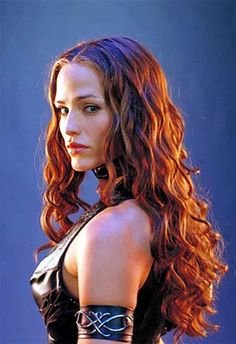
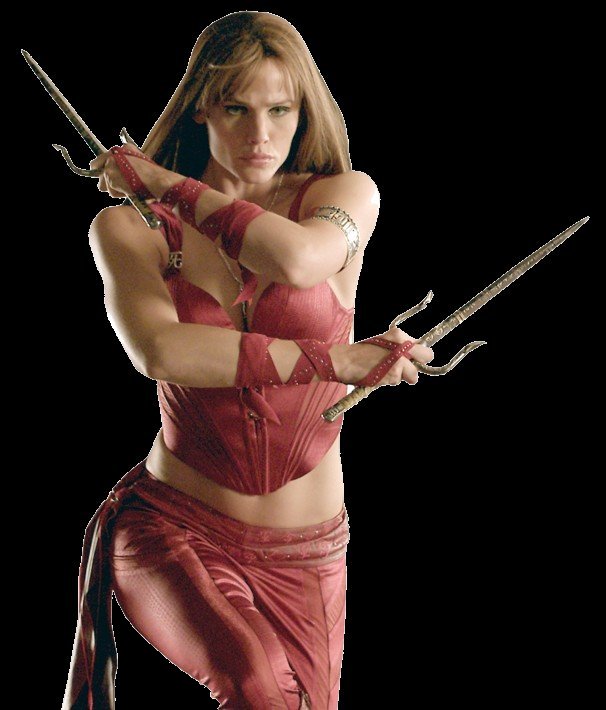 S'yrekka, daughter of H'vakia
S'yrekka, daughter of H'vakia
House: R'zark.
Position: General.
Born: Unknown
Race: Klingon female.
Marital Status: Unknown.
Personal:
S'yrekka was born as daughter to General H'vakia. Long jet black hair and cruel eyes. A few scars on her face and muscular arms. Wears same 'kleavage' armour as the Duras sisters. She defies the convention of men being generals on the High Council. Rumours abound of her keeping 'trophies' from her male victims as a reminder of her strength. Lost her male siblings from conflicts on the nearby Kinshaya region. She is a mistress of the mekleth and d'ktahg. She has the D-7 battlecruiser K'hemdar as her flagship. As S'yrekka lives on the frontier of the Klingon Empire she has no time for the male-dominated rules of Kronos. Her brothers and father were weak and killed by the quest for glory against the Kinshaya. General S'yrekka fights along the Kinshaya border as well as against the Kinshaya.
Author notes:
Jennifer Garner has stated for the records she would like to be a Klingon. Well, here she is. I wanted a Klingon who buck the rules and has had to take up the mantle from her male siblings. This has made her into a strong, yet cruel Klingon. The unfairness of the Empire and it's rules has made her a warrior who does not compromise - and this has brought her unparalleled success.
Torbek – middle son of Kesh of the House of Kesh.
Torbek grew up in the shadow of his older brother, the two competing against each other for recognition from their father. Like Waurg, Torbek was groomed to succeed his father, very much as a reserve for Waurg in case of his death. Torbek was more a warrior than a politician and the war against the Gorn provided a platform for his progression up the ranks. Torbek's difficulty came with the cessation of hostilities with the Gorn and he was required to serve on the High Council in the First City of Kronos. Torbek resented talking and not fighting. The negotiating part bored him to the extent that he missed meetings whilst he endeavoured to start a campaign to re-take the Kinshaya Kingdon and strive to enlarge the Empire.
Torbek's dreams of conquest were never realised, his grasp of politics and combat never having reached the pinnacle that his older brother did. Back at the High Council, the House of Kesh had its influence marginalised as a lack of presence allowed Azetbur to crush the power of the House. Waurg had the acumen to be present to fight his corner. As the dawn of the 2300s saw the House start to ebb in power and influence as the power games continued. Torbek's frustration extended to the blood wine as he realised he had neither the military nor political prowess of his elder brother. The access to the blood wine and feasting meant his absences from the High Couci became more and more noticeable. This made Azetbr's task of sidelining a potential rival House much easier. For Azetbur, the decisions of Empire needed to be tempered with the need to keep the Federation on-side for aid to clean up after Praxis and constant warfare.
Torbek had, by this point, declined into depression and alcoholism (The twin scourges of the Empire brought on from the boredom of peacetime). Falling short of his brother's legacy and being denied combat- and being slapped-down for rogue attempts- meant the House of Kesh had fallen from grace and even its traditional seat on the High Council was in doubt. The next part of the story is shrouded in greyness. The official version is that Torbek asked his youngest bother Kaarg to perform honourable suicide, or Mauk-to'Vor, to restore honour to both Torbek's name and the House. Kaarg obliged his brother and by doing so assumed the mantle of head of the House of Kesh and restored honour to the House.
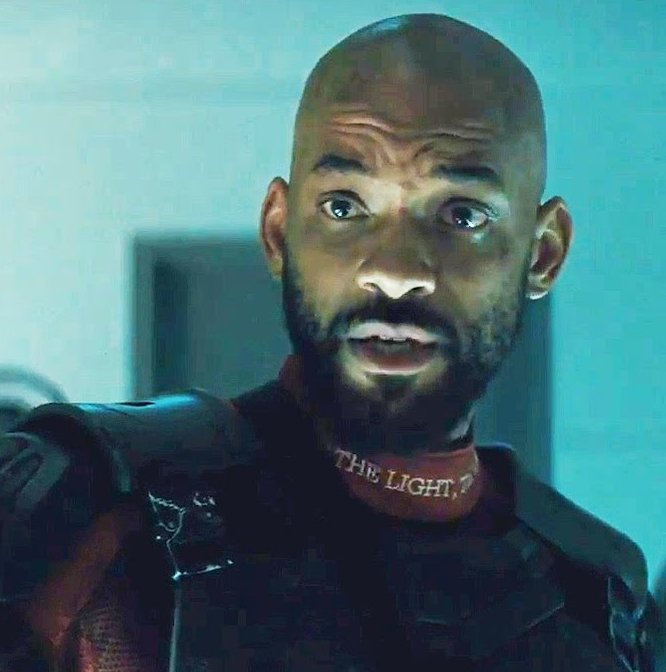 Waurg – son of Kesh of the House of Kesh.
Waurg – son of Kesh of the House of Kesh.
As the eldest son, he was groomed as successor to Chancellor Kesh, he was trained at the Imperial dojo, schooled in Kahlessian philosophy and art of combat. Waurg excelled at fighting: unarmed, bladed, disruptor and starship. combat and was seen to be the natural successor to the Chancellor. With the death of Kesh in 2289, after a challenge by former General Gorkon, Waurg was promoted to the Head of the House of Kesh and assumed a position on the High Council. The principal assets of the House of Kesh went to Waurg, including B-11 Accuser, D-7 Koro, D-8 K'T'inga and D-9 Warrior's Anger class warships.
Waurg took over as the Head of the House and took up the fleet against the Kinshayas. Gorn and other enemies of the Empire. He built up the reputation of the House under the new leadership whilst venting any rage at the loss of his father. Honour prevented revenge and designated the death of Kesh as an honourable one within the social and cultural rules of the Empire. The war against the Kinshaya and Gorn brought an unparallelled opportunity for honour and glory to both the House and Empire. Both Waurg and his younger brother Torbek went to war as leaders of fleets, whilst their youngest brother Kaarg commanded a squadron.
General Waurg was the principal rival to Azetbur. As the son of Kesh, he's not happy at the House of Gorkon as Gorkon killed his father in an honourabe duel. The selection of Azetbur - a woman - goes against tradition that further angers Waurg. Honour forbids him from taking revenge for his father's honourable defeat. As a powerful Houe who fights on the rimward region of the Empire near the Gorn border, he has loyalties and a vast fleet of warships inherited from his father's legacy. Waurg has an Accuser class IKS jeqqIj (Bludgeon) and is a take-charge Klingon. Whilst Waurg cannot challenge Azetbur over his father he could disagree with her bein chancellor and oppose her. Waurg spent time away from the High Council to be more hands-on with building power for the House of Kesh.
Waurg lost his life in a fleet action against the Gorn, his sacrifice in an against-the-odds manoeuvre. His death both elevated the position of the House of Kesh and his own, being honoured by both statue and song. The middle brother, Torbek, then assumed the position as head of the House.
Author's Notes:
Waurg is the eldest of the three sons of Kesh, focus of my upcoming story "The Third Brother". I envisioned this character to be the eldest son given the best imperial schooling, the best opportunities and he is the best all-round Klingon warrior. For the youngest of the three sons, Kaarg, to stand any chance of leading the House, both the eldest son and his back-up (the second son) had to die. Waurg would have one day become chancellor, had he not died bravely in combat.






 Azetbur, daughter of Gorkon
Azetbur, daughter of Gorkon
 Azetbur was caught in the grip of Fek'lhr: trying to save her father's Empire by appeasing the Federation for now and to be the leader of the High Council. It took all of the political training that Azetbur had from her father to keep the High Council onboard - not before a headstrong challenger had to be cut down by Azetbur. The Federation President had given a full speech supporting the Valiant Captain's declaration. Azetbur responded: Azetbur responded: "This is a time for precedents to be set. Where Terajun leads, others will follow. They must not be allowed to become any part of your Federation, less the Empire descend into mass uprisings and a flood of refugees plague your border worlds. We will let them have their freedom - for now. But they are a Klingon world, and a Klingon world they will remain. Those who sought to perpetrate a crime of galactic proportions, leaving a stain that could never be expunged from our honour, have been arrested and will be dealt with by Klingon law. Those who participated have already been executed. The Klingon Empire will never be a party to genocide. Nal khomerex, khesterex. We will grow - but in the way Kahless himself intended: facing our foes and defeating them in honourable combat. Whomever is the stronger, smarter, better shall prevail. And if there are those who seek to regain what their forebearers lost to us by challenging us anew, well... we look forward to the next battle."
Azetbur was caught in the grip of Fek'lhr: trying to save her father's Empire by appeasing the Federation for now and to be the leader of the High Council. It took all of the political training that Azetbur had from her father to keep the High Council onboard - not before a headstrong challenger had to be cut down by Azetbur. The Federation President had given a full speech supporting the Valiant Captain's declaration. Azetbur responded: Azetbur responded: "This is a time for precedents to be set. Where Terajun leads, others will follow. They must not be allowed to become any part of your Federation, less the Empire descend into mass uprisings and a flood of refugees plague your border worlds. We will let them have their freedom - for now. But they are a Klingon world, and a Klingon world they will remain. Those who sought to perpetrate a crime of galactic proportions, leaving a stain that could never be expunged from our honour, have been arrested and will be dealt with by Klingon law. Those who participated have already been executed. The Klingon Empire will never be a party to genocide. Nal khomerex, khesterex. We will grow - but in the way Kahless himself intended: facing our foes and defeating them in honourable combat. Whomever is the stronger, smarter, better shall prevail. And if there are those who seek to regain what their forebearers lost to us by challenging us anew, well... we look forward to the next battle." 
 Large muscular Klingon General who was promoted during the Gorkonian era. Head of the House of Choroth, he commanded the K'T'inga class Vengeance and later other K'T'inga class battlecruisers.
Large muscular Klingon General who was promoted during the Gorkonian era. Head of the House of Choroth, he commanded the K'T'inga class Vengeance and later other K'T'inga class battlecruisers.  The Vengeance Incident came from Captain's Log: Harriman graphic novel by Marc Guggenheim. This was set 6 months after the loss of Kirk in the encounter with the Nexus. General Choroth served on the Federation border along with the Houses of Amar, Chang, Duras and G'Iogh. Choroth served on the High Council and was politically a rival to Azetbur and opposed relations with the Federation. After the incident with the Enterprise-B, Choroth would clash with the Federation a few more times.
The Vengeance Incident came from Captain's Log: Harriman graphic novel by Marc Guggenheim. This was set 6 months after the loss of Kirk in the encounter with the Nexus. General Choroth served on the Federation border along with the Houses of Amar, Chang, Duras and G'Iogh. Choroth served on the High Council and was politically a rival to Azetbur and opposed relations with the Federation. After the incident with the Enterprise-B, Choroth would clash with the Federation a few more times. Kaarg
Kaarg Kalnor
Kalnor  Kesh
Kesh Kort
Kort Melkor
Melkor 
 S'yrekka, daughter of H'vakia
S'yrekka, daughter of H'vakia Waurg – son of Kesh of the House of Kesh.
Waurg – son of Kesh of the House of Kesh.


